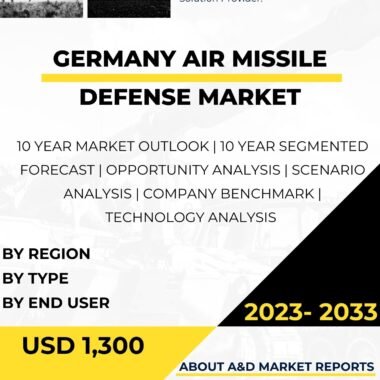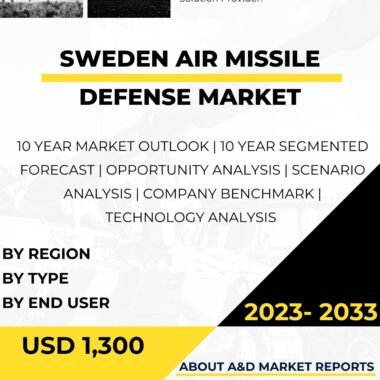Description
Canada’s Air Missile Defense capabilities are essential components of the nation’s defense strategy, aimed at safeguarding Canadian airspace and protecting against aerial threats. As a part of its overall defense posture, Canada employs a combination of systems and technologies designed to detect, track, and intercept incoming missiles and hostile aircraft. These air missile defense systems are critical to maintaining airspace sovereignty, protecting key assets, and ensuring the safety of Canadian citizens.
The Canadian Armed Forces utilize a variety of air missile defense systems, each with its own unique capabilities and roles. These systems are integrated into a layered defense architecture, allowing for a comprehensive and coordinated approach to aerial threat detection and engagement.
One of the primary air missile defense systems employed by Canada is the North American Aerospace Defense Command (NORAD) partnership with the United States. NORAD is a binational agreement between Canada and the U.S., established to defend against airborne threats and maintain aerospace warning and control for North America. Under NORAD, a network of radars and sensors continuously monitors North American airspace, providing early warning of potential aerial threats.
NORAD’s aerospace control and warning system include a combination of long-range surveillance radars, over-the-horizon radars, and space-based sensors. These sensors can detect and track a wide range of airborne objects, including aircraft, missiles, and satellites. By sharing information and data, NORAD enhances Canada’s situational awareness and ensures a coordinated response to aerial threats.
In addition to NORAD, Canada utilizes ground-based air defense systems to protect key assets and military installations. The Ground-Based Air Defense (GBAD) systems typically consist of surface-to-air missile batteries, anti-aircraft guns, and associated radars. These systems provide point defense capabilities, protecting specific areas against airborne threats.
The Canadian Armed Forces operate mobile GBAD systems, which can be rapidly deployed and repositioned to respond to evolving threat scenarios. These systems serve as a flexible and adaptable component of Canada’s air missile defense, providing protection for critical infrastructure, military bases, and high-value assets.
Furthermore, Canada has invested in advanced air surveillance and early warning radars, such as the AN/TPS-70 Long Range Air Surveillance Radar. These radars can detect and track airborne targets at long ranges, enhancing Canada’s ability to identify and respond to potential aerial threats in a timely manner.
Canada’s air missile defense capabilities also include fighter aircraft armed with air-to-air missiles. The Royal Canadian Air Force (RCAF) operates modern fighter jets, such as the CF-18 Hornet, which are equipped with advanced air-to-air missiles. These aircraft serve as a rapid response force, capable of intercepting and engaging hostile aircraft or missiles that may pose a threat to Canadian airspace.
The RCAF’s fighter aircraft are supported by airborne early warning and control (AEW&C) platforms, such as the E-3 Sentry (AWACS). These airborne platforms provide a high-altitude vantage point, extending radar coverage and enhancing Canada’s ability to detect and track potential aerial threats over vast areas.
The integration of air missile defense systems involves close cooperation and coordination among various military branches and agencies. The Canadian Army, Royal Canadian Navy, and Royal Canadian Air Force collaborate to ensure seamless integration of ground-based and airborne air defense capabilities.
Canada’s air missile defense capabilities are not limited to territorial defense; they also play a crucial role in international operations. As part of multinational coalitions, the Canadian Armed Forces contribute to air defense efforts in regions where aerial threats may arise. Participation in international missions ensures Canada’s commitment to global security and strengthens defense cooperation with allied nations.
The successful operation of air missile defense systems requires rigorous training and simulation exercises. Military personnel undergo extensive training to operate and maintain complex air defense systems effectively. Regular exercises and simulations enable troops to hone their skills and practice response procedures in simulated threat scenarios.
As technology continues to evolve, Canada invests in research and development to enhance its air missile defense capabilities. This includes improvements in sensor technologies, missile systems, and data fusion capabilities to ensure optimal threat detection and engagement.
Canada’s commitment to air missile defense extends beyond hardware and technology. The nation actively engages in international forums and partnerships to promote cooperation on missile defense issues. Collaboration with like-minded nations contributes to the development of best practices, information sharing, and joint exercises.
The integration of air missile defense is guided by clear policy and strategic objectives. The Canadian government regularly reviews and updates its defense policies to adapt to emerging threats and geopolitical dynamics. These policies ensure that Canada’s air missile defense remains aligned with its broader defense and security objectives.
As with any defense capability, air missile defense is subject to budget considerations and resource allocation. Canada’s defense investments aim to strike a balance between acquiring advanced capabilities and meeting other national priorities.
In conclusion, Canada’s air missile defense capabilities are integral to the nation’s defense strategy, safeguarding Canadian airspace and protecting against aerial threats. A combination of NORAD partnership, ground-based air defense systems, fighter aircraft, and airborne early warning platforms ensures a layered defense approach.
These systems, supported by rigorous training, coordination, and international collaboration, enhance Canada’s situational awareness and response capabilities. As technology and threats continue to evolve, Canada’s commitment to investing in air missile defense ensures that the nation remains prepared to meet emerging challenges and protect its airspace, sovereignty, and citizens.




